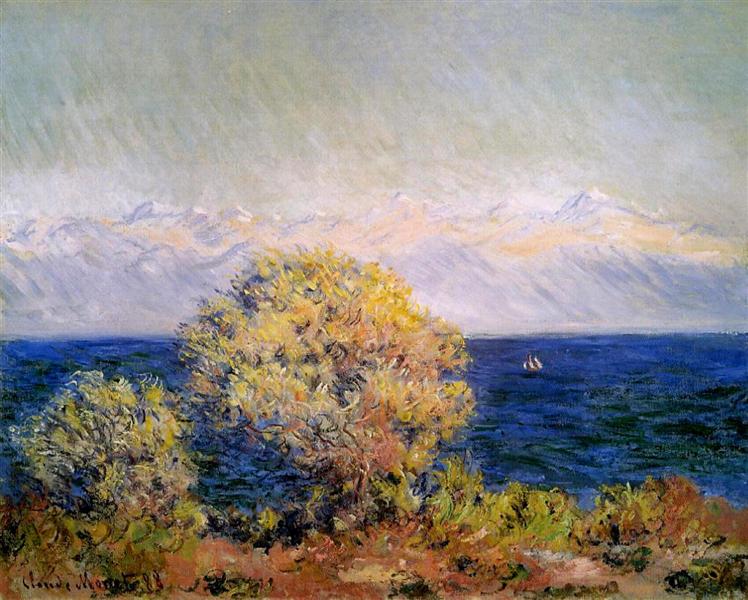Description
Claude Monet's "At Cap D'Antibes - Mistral Wind," created in 1888, is a brilliant example of how the Impressionist master captures the fleeting essence of light and movement. Monet, a pioneer of Impressionism, moved to the French Riviera in hopes of finding the clarity and color that defined his style, and this painting is no exception. In it, the viewer is enveloped by the energy of the wind and vibrant marine life that seems to come to life with every brushstroke.
From the first impression, the work radiates a colour palette that converges from deep blue tones to crisp whites, with greens and yellows of the landscape surrounding the coast. The sky, whose clouds move dynamically, reveals the intensity of the Mistral wind, a meteorological phenomenon well known in the region that influences the ambiance and atmosphere of Cap d'Antibes. The waves of the sea, represented through fast and loose brushstrokes, seem to dance, capturing the vibration of nature in a pyramidal moment of effervescence and life.
While the composition is largely landscape-like, the eye can also pick up on the subtle presence of human figures, appearing almost as patches of colour in the scene. The figures, although not the central focus of the work, contribute to the narrative of life on the coast and blend harmoniously into the landscape, suggesting an intimate connection between humans and nature. Their delicate presence is felt more on an emotional than a physical level, inviting the viewer to share the experience of being under the wind and the light.
The way Monet handles light is also a fascinating aspect of the work. The Mediterranean sunlight reflects off the water with an almost palpable glow, while shadows appear on the surfaces of the rocks and sand. This interplay of light and shadow not only gives depth to the painting, but also enriches the visual experience, leading the viewer to contemplate how light can transform a landscape.
Monet's style in this painting is characteristic of his Impressionist exploration, in which form and colour merge to create a representation of lived experience that is not only objective but also subjective. Monet departs from the photographic precision of his predecessors, opting for a more spontaneous and emotive approach that allows him to capture the immediacy of the moment. This technique can be seen in other similar works, such as "Impression, Sunrise" or "The Water Lilies", where light, colour and atmosphere are the main actors on the canvas.
"At Cap D'Antibes - Mistral Wind" is not just a depiction of a place, but an invitation to experience a moment, a sensation that evokes the effect of the wind on your face and the sound of waves on the shore. Monet offers us a vision that transcends the simple image to invite us to a deeper reflection on nature and our place within it. The work captures not only the physical landscape of the French Riviera, but also the emotional transformation that this environment can inspire in the observer, perpetuating Monet's legacy as one of the greatest masters of Impressionism.
KUADROS ©, a famous painting on your wall.
Hand-made oil painting reproductions, with the quality of professional artists and the distinctive seal of KUADROS ©.
Painting reproduction service with satisfaction guarantee. If you are not completely satisfied with the replica of your painting, we will refund 100% of your money.

